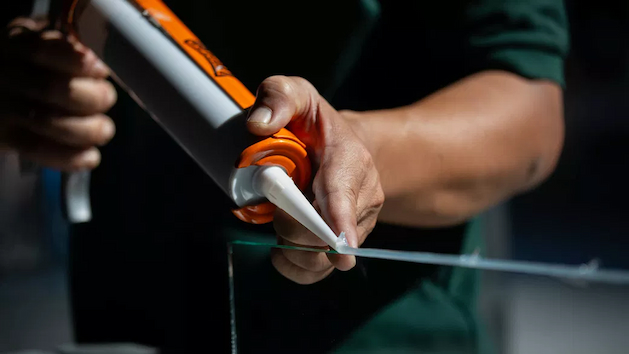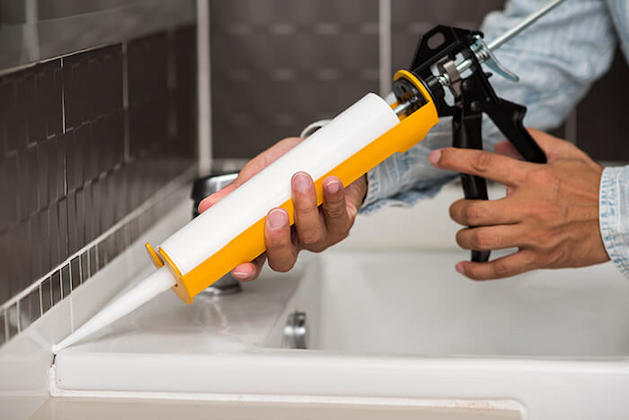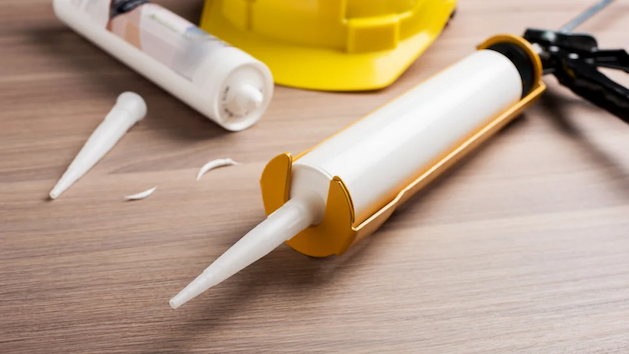At some point, every contractor, tradie, and homeowner finds themselves in need of a silicone-based adhesive. From its everyday usefulness in filling gaps around kitchen and bathroom fixtures to reinforcing fireproof joints between walls and doors in skyscrapers, the range of silicone adhesive formulations is as extensive as the number of roles they’re required to fill.
Its versatility and durability have even helped to make it just as essential to the automotive, aerospace, and marine industries as it is in the building and construction trades. With so many different types available, it’s worth taking a moment to look at what makes these super-polymers so special, along with a few of the silicone options you can consider next time you’re searching for an airtight, waterproof solution.
Tough Jobs Call For Silicone Adhesives

Let’s be honest: while there are a lot of polymer-based adhesives used by all kinds of industries when it comes to keeping out moisture, air, and dust, silicone adhesives are in a class by themselves. In fact, no other polymer possesses the strength, resilience, or resistance to environmental extremes that heavy-duty industrial silicone sealant does, making it the only true indoor and outdoor adhesive that’s suitable for both professional and consumer use.
With the ability to maintain their elasticity while withstanding temperature extremes that can range from -30°C – 300°C, silicone adhesives are capable of filling cracks and gaps in all kinds of materials, including:
- Metal, glass, and other non-porous substrates;
- Stone and ceramic substrates; and,
- Fiberglass and other composite materials.
This elasticity is referred to as a silicone’s modulus value. By design, low-modulus silicone sealants are more elastic than high-modulus varieties, but both are incredibly capable of absorbing the stresses of contracting or expanding substrates, as well as the shocks and vibrations from impacts.
In fact, you don’t need to look any further than the adhesive used on your car’s windscreen to know just durable they are. Silicone adhesives won’t shrink, separate, or become brittle even after decades of tough, non-stop exposure; and these are just some of the reasons that they’re so highly regarded for controlling leaks.
Silicone Adhesive’s Superior Properties

Although the type of silicone you need will be determined by the circumstances you’re using it in, they all possess a common core of properties that include:
- Complete resistance to water and moisture;
- High resistance to UV, ozone, and chemical degradation;
- High resistance to fungal and microbial growth;
- High thermal stability over a broad temperature range; and,
- Low chemical and thermal conductivity.
With most silicone adhesives also possessing low toxicity, odour, and volatility characteristics, their safety is as noteworthy as their effectiveness. Silicone’s only inherent inability is that its hydrophobic nature prevents it from being successfully painted over.
From elasticizing the joints in concrete walls and floors to soundproofing the tiniest openings in home studios, silicone has all the special bonding, adhering, and insulating characteristics that you need. And fortunately, you can buy silicone sealant online for all of these jobs, and never have to worry about uncontrollable leaks ever again.
Choosing the Right Type of Silicone

When you’re looking at all the different types of silicone adhesive, the first decision you need to make is whether you prefer an acetic or neutral cure silicone. The reagents in acetic cure silicones produce a strong, vinegar-like odour. They’re formulated to cure quickly, but they can be mildly corrosive to metals like brass and copper, sensitive electronics, and stone.
Neutral cure silicones contain fast-evaporating alcohol that won’t harm substrates and are preferred for applications with greater exposure to water and moisture. These silicones don’t cure as quickly as acetic variants though, which can make a difference in the type of sealant that’ll be best for your requirements.
- Bathroom silicone sealants – Bathroom and kitchen sealants are extremely flexible, low-modulus silicones that are either white or clear coloured, come in acetic or neutral cure variants, and are specifically formulated to resist mould and mildew when exposed to hot and humid environments.
- Roof silicone sealants – Roof and structural type sealants are designed specifically for harsh outdoor sealing jobs, are available with either high or low modulus values, and come in a wide range of colours, as well as acetic or neutral cure variants.
- High-temperature sealants – Permanently flexible, acetic cure high-temperature sealants are formulated to be heat resistant to temperatures up to 312°C, possess high tensile strength, and are ideal for sealing items like industrial ovens, chimneys, and ductwork.
- Low-modulus silicone sealants – Although any product can be low modulus, neutral cure sealants with +100% / -50% elongation characters and permanent flexibility are the perfect all-temperature adhesives that can be used with any substrate.
- RTV silicone sealants – Neutral cure RTV (room-temperature-vulcanizing) silicones are the optimal, general-purpose adhesives for all types of substrates and working temperatures, are available in a range of colours, and can be applied to vertical and overhead surfaces without flowing or sagging.
No matter which type of silicone you buy, the amount it needs to fully cure is the one aspect that you can’t afford to ignore. And that’s why when you buy these adhesives, it’s important to understand how the curing process works.
The Conditions for Proper Silicone Curing
If you’ve ever applied silicone grout sealer to a shower or tub, then you already know that they will usually be dry to the touch in under an hour with normal humidity. Depending on the type of silicone and the amount applied, however, some can still require anywhere from a few hours to an entire month to fully cure.
There are 3 factors that influence silicone curing:
- Silicone type. Silicones that have been formulated for more specialized functions tend to need longer curing times than ordinary silicones.
- Humidity. When exposed to ambient moisture, the moisture-scavenging properties of silicones cause their curing rates to increase.
- Temperature. Warmer ambient and substrate temperatures are usually accompanied by higher humidity that would increase the rate of curing.
In short, no matter which type of product you use, the conditions that are present when you apply it can make all the difference in how well the silicone seals. Silicones aren’t picky about when or where they’re applied; with enough time, they’re going to cure. Avoiding applications during drastic humidity and temperature swings, however, is the key to ensuring the best curing.
Finishing Thoughts
At the end of the day, any kind of unattended leak can quickly become more than just an annoyance. A persistent water leak can eventually penetrate and weaken a building foundation, and even tiny amounts of flue gas spillage can have disastrous side effects. In either case, however, the solution is available in a tube.
Industrial silicone sealant formulations are designed to seal leaks effectively and permanently. And with proper surface preparation, they have all the properties needed to keep water, dust, and moisture at bay, so that you and your property can stay safe from unwanted incursion.


